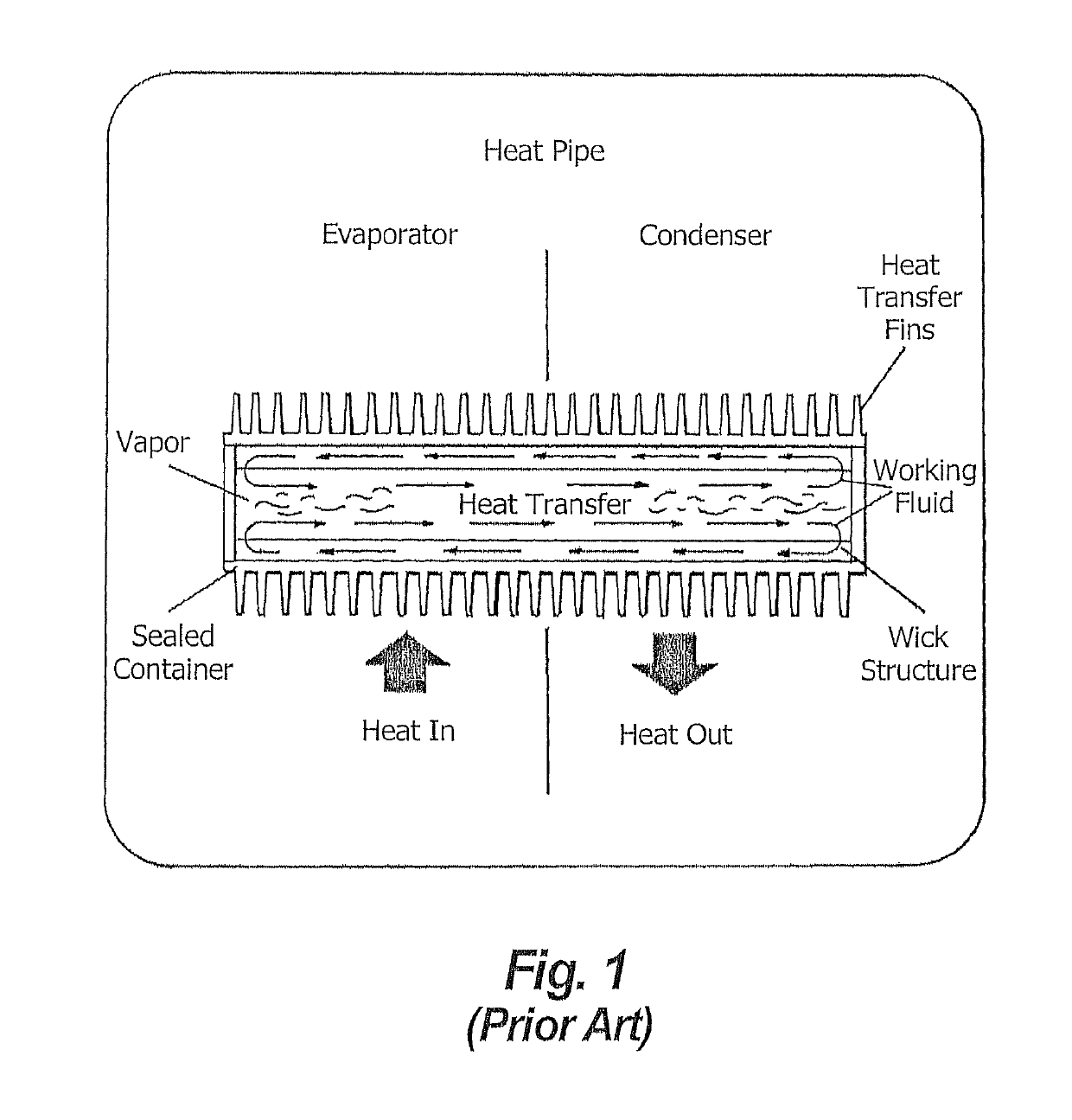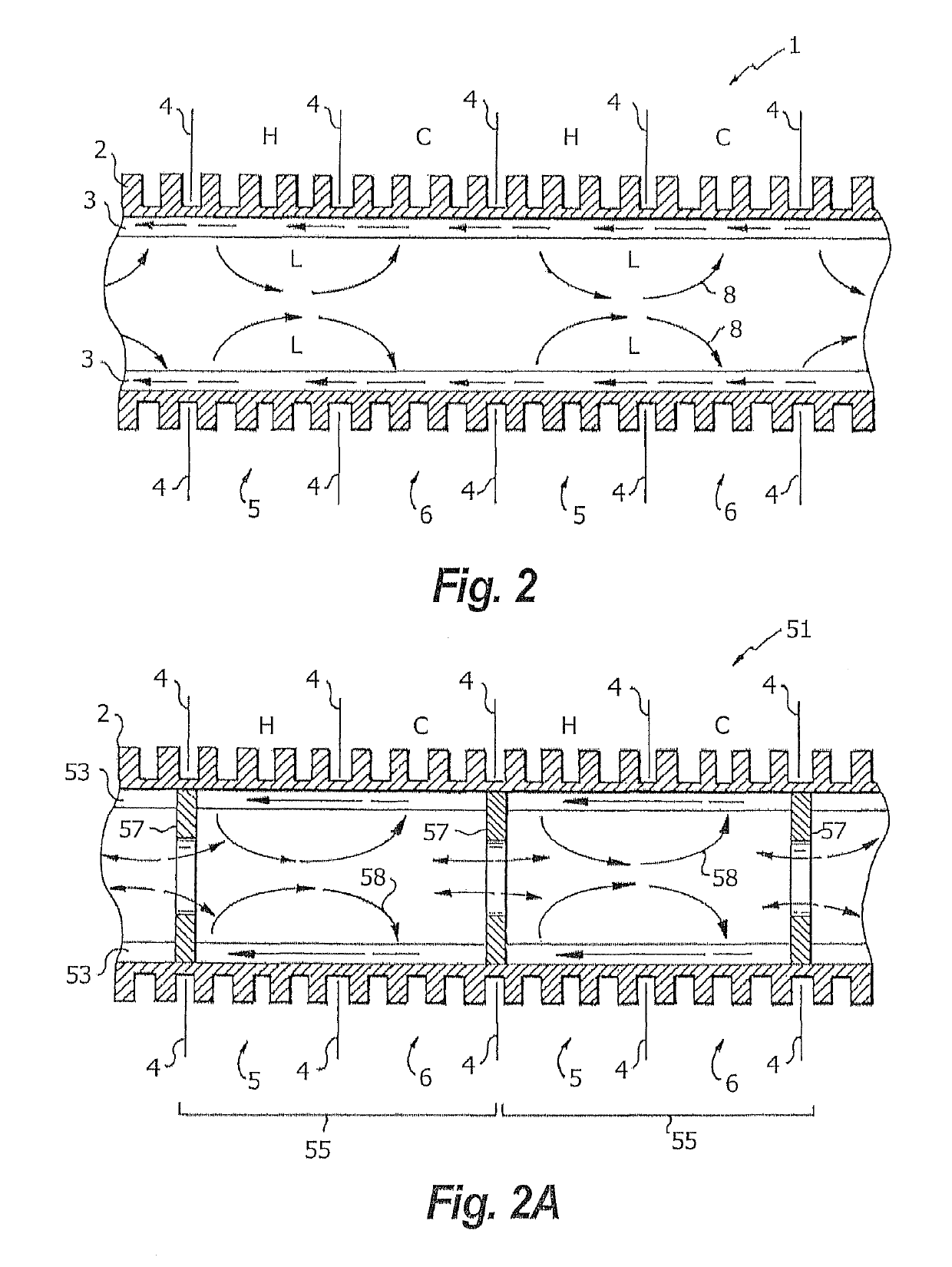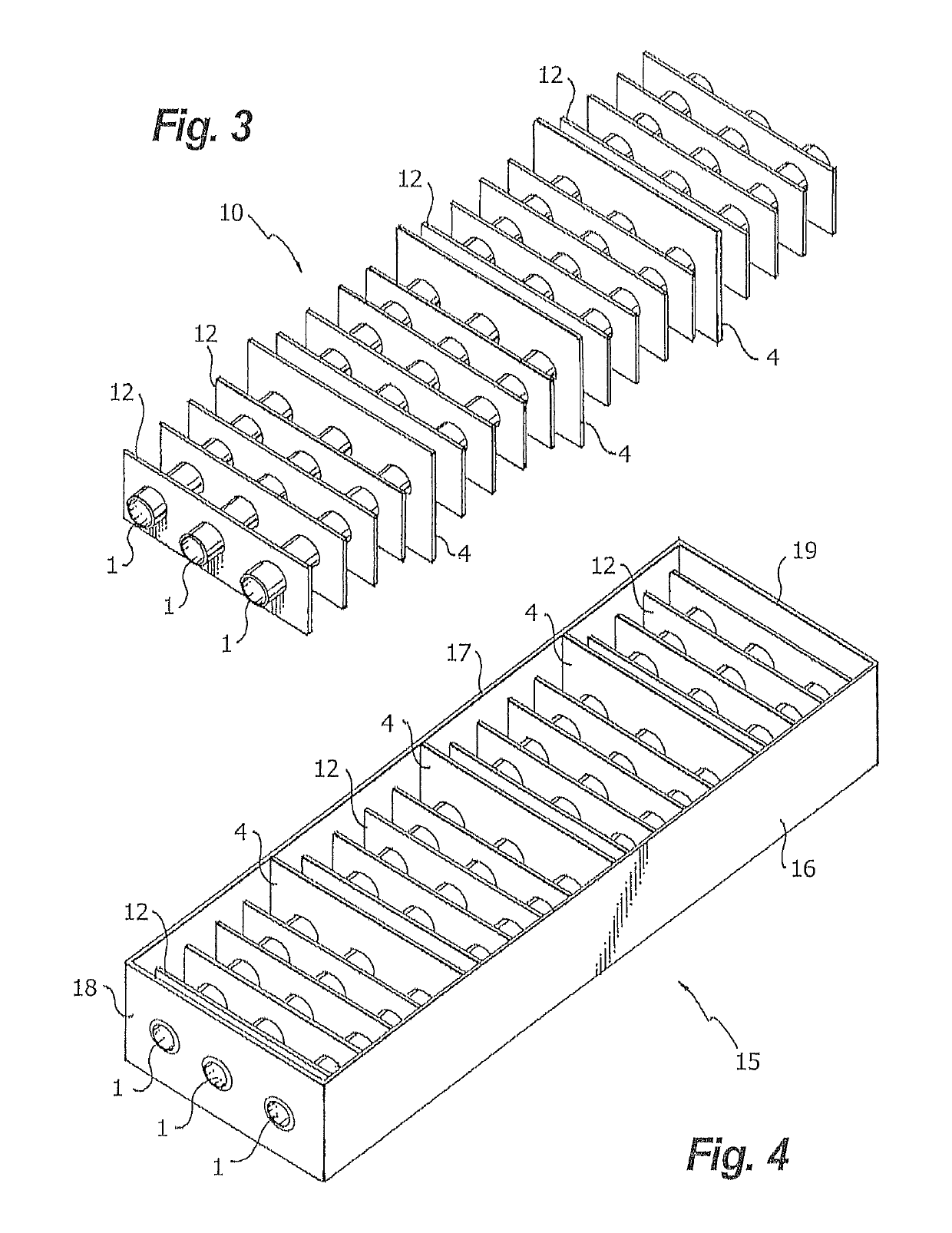Method using heat pipes with multiple evaporator/condenser zones and heat exchangers using same
a heat exchanger and heat pipe technology, applied in lighting and heating apparatus, ventilation systems, heating types, etc., can solve the problems of reducing limiting the physical construction of proper operation, and affecting the efficiency of large tubes, so as to reduce the pressure drop and subsequent energy penalty
- Summary
- Abstract
- Description
- Claims
- Application Information
AI Technical Summary
Benefits of technology
Problems solved by technology
Method used
Image
Examples
Embodiment Construction
[0045]FIG. 1 illustrates the operation of a typical prior art heat pipe with a single divider externally separating evaporator from the condenser section. Note the one-way internal vapor flow to the right in the open center and the reverse liquid flow in the wick.
[0046]FIG. 2 shows a section of heat pipe using the multiple adjacent evaporator / condenser (hot / cold) sections method along the entire length of a heat pipe 1. The outer side 2 is shown as a rigid finned tube with an internal wick 3 bonded to it. Baffles or partitions 4 keep the external hot 5 and cold 6 flows or regions separated. Vapor 8 evaporates into the central section and partitions into a right and a left drift to the adjacent cold condensing section 6 from each hot evaporating section 5. FIG. 2 also shows the direction of liquid flow within wick 3 in both directions toward adjacent evaporator 5 sections. This flow generates short loops of vapor / liquid within the heat pipe, which negates the inherent inefficiency as...
PUM
 Login to View More
Login to View More Abstract
Description
Claims
Application Information
 Login to View More
Login to View More - R&D Engineer
- R&D Manager
- IP Professional
- Industry Leading Data Capabilities
- Powerful AI technology
- Patent DNA Extraction
Browse by: Latest US Patents, China's latest patents, Technical Efficacy Thesaurus, Application Domain, Technology Topic, Popular Technical Reports.
© 2024 PatSnap. All rights reserved.Legal|Privacy policy|Modern Slavery Act Transparency Statement|Sitemap|About US| Contact US: help@patsnap.com










